Per Se
Per Se
New York
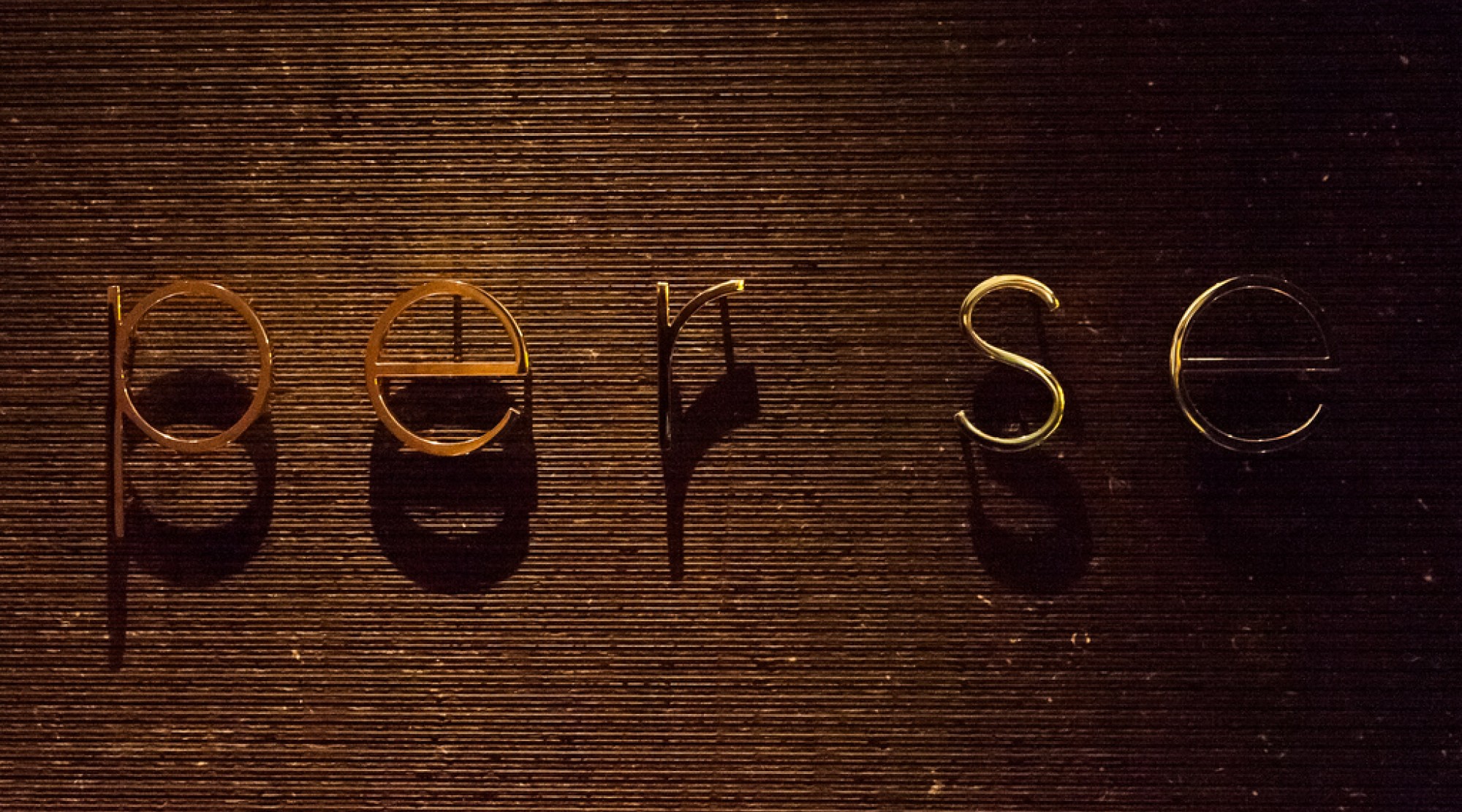
When I moved out to Northern California for college almost 30 years ago, a gourmet meal was adding fresh peas, corn and a few slices of bacon to my otherwise drab daily dinner of instant ramen soup. Fast forward 10 years, when I had started to explore some of the more interesting Bay Area dining establishments, and I began to hear stories about “The French Laundry”. I’m not embarrassed to admit that I did wonder why anyone would make such a big deal about somewhere you take your dirty clothes to get cleaned. Fast forward another 10 years and now I knew what a big deal The French Laundry was, and more importantly, why. I even knew about Thomas Keller and began to dream of the day I’d eat a meal at the restaurant that cemented his reputation as one of the best chefs in the world. Fast forward another 10 years (to the present) and I’ve tried for a decade, in vain, to get a reservation at what has clearly become my own personal Moby Dick, all the while eating at many of the other amazing fine dining establishments in the area. Arguably, many of those have an equal or even more impressive reputation, but we crave what we can’t or don’t have. So, when I learned I’d be spending a few days with my sweetie in New York City, I decided to try and leverage a few connections I’d made with “someone who knows someone” to try and get a reservation at the East Coast French Laundry, Tomas Keller’s Per Se, located in the heart of Manhattan. A few calls, and a little slick talk and I had secured my 2-person reservation – hallelujah!
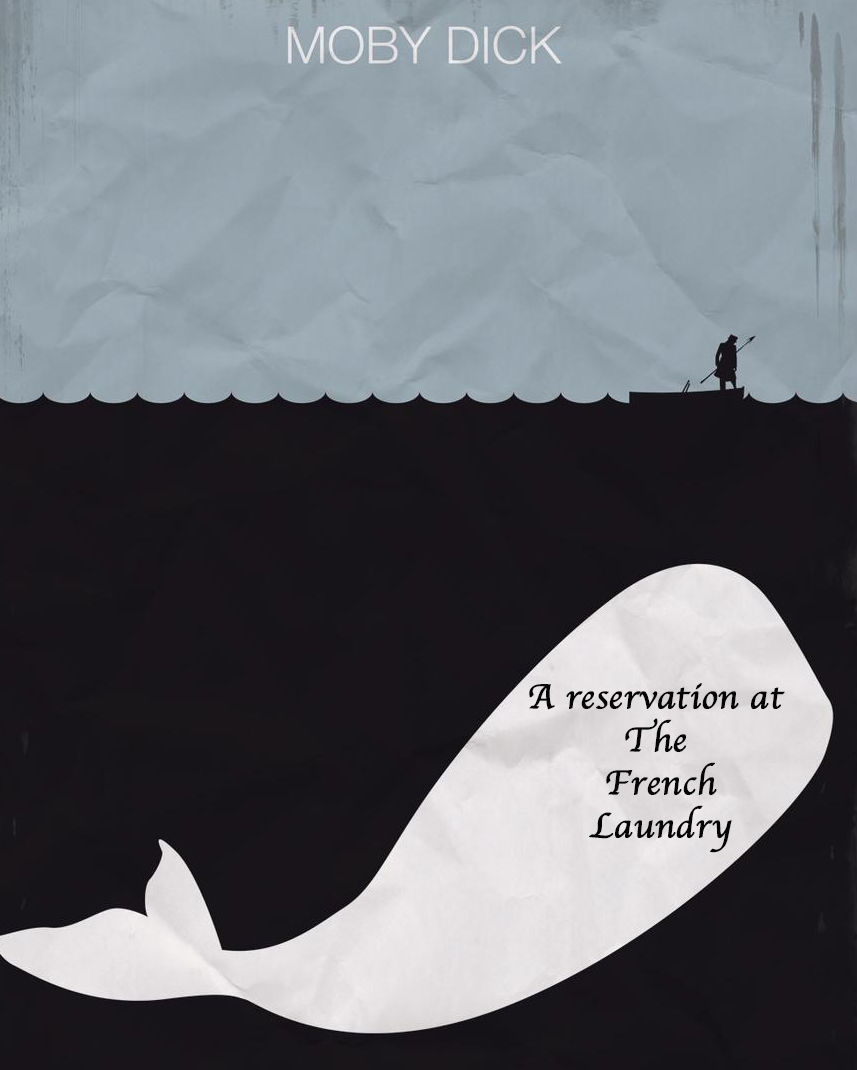
Now, you have to understand how excited I was about this meal – there was definitely going to be some research in preparation of the dinner, particularly as it is one of the top 20 most expensive bookable restaurants in the world. Obviously, with so many restaurants and other endeavors to tend to, Keller doesn’t do any of the culinary direction himself. The executive chef at Per Se, is Corey Chow. Chef Chow was raised in San Gabriel, California, and worked at Alan Wong’s in Hawaii before making his way to Per Se in 2007. He’s also cooked at two other highly acclaimed New York restaurants, joining the NoMad in 2013 and later Torrisi Italian Specialties, where he was the chef de cuisine. He returned to Per Se as executive sous-chef in 2015. He is know to fuse high French cuisine with the traditional Chinese fare of his childhood – a combination I was eager to try. His view on how food can be used to bring people, particularly families, together originated during this formative time in his life when he regularly had weekend meals at his grandparents’ place.
Per Se is located at the iconic 10 Columbus Circle Building. Walking into the building, you realize you are in the playground of the New York 1%, which is much more “one percentier” than the 1% of most other places. This is the type of building where they don’t have elevators, they have lifts (said with a haughty French accent) – so we took said lift to the 4th floor where we found our way to a little oasis of plants, trees and benches in front of a pair of notable blue doors. The illusion begins here as the real entrance is a sliding door, immediately adjacent to these doors. The interior was as elegant as one would expect from any establishment that has an indoor “outdoor” garden where patrons relax prior to being summoned for their sup. Elegantly set tables with tasteful floral arrangements help you forget that you are in the heart of the most urban of urban areas.


Now a blow-by-blow of the amazing meal!
We started the meal with a cornet of white fluke with goat cheese. The fish was delicately “dressed” with lemon and chive and served in a crisp pastry filled with goat cheese. A very fresh and yet satisfying way to start our meal. We were also served a couple of crackers with pimento cheese which went nicely with our beverages of choice. As usual, I started with a glass of bubbly, in this case a glass of Marguet Shaman rose 2015 Champagne Grand Cru. This wine, known for its extra effervescent nature didn’t disappoint, with a delicate mineral quality and nice red fruit coming through mid-palate. My sweetie had a fruity virgin concoction whipped up by the talented bar-tender.
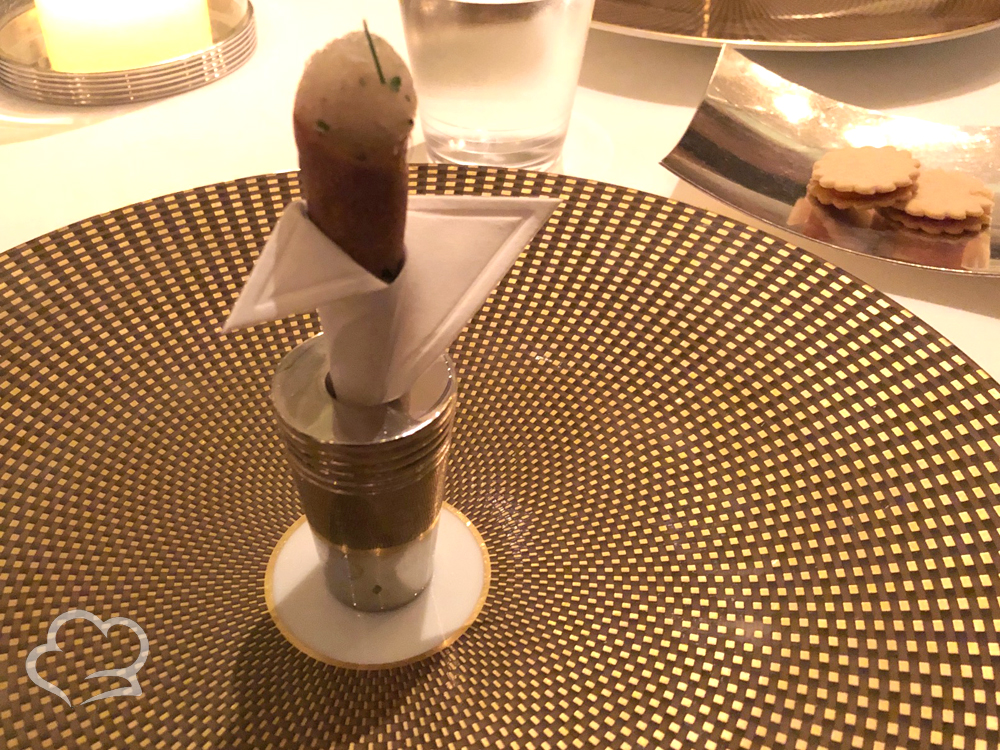
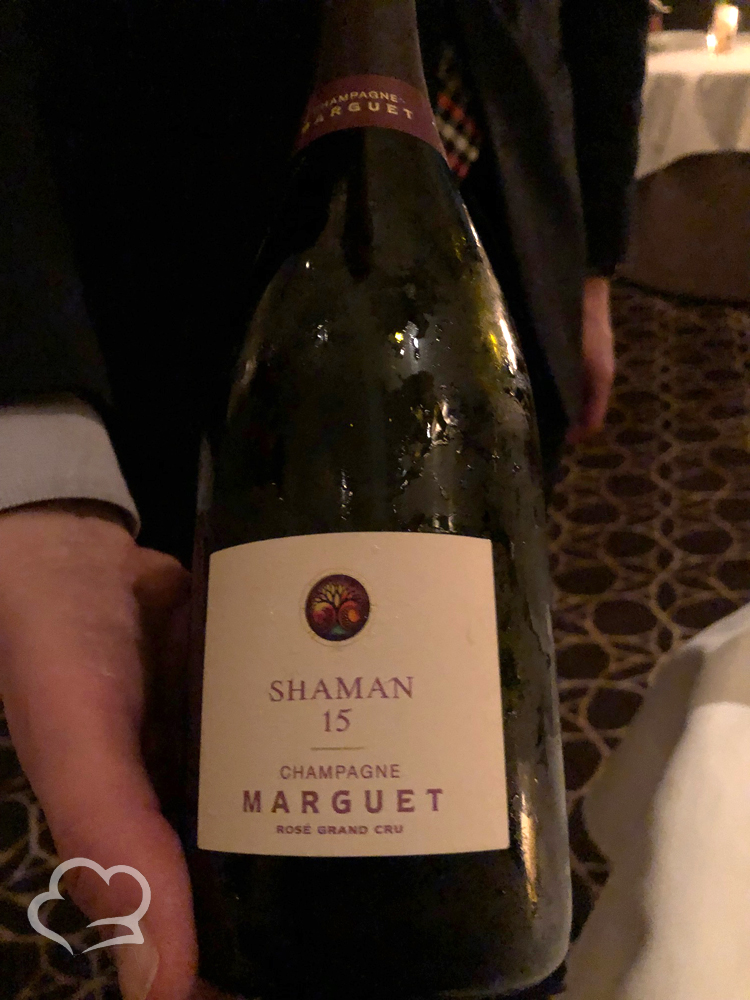
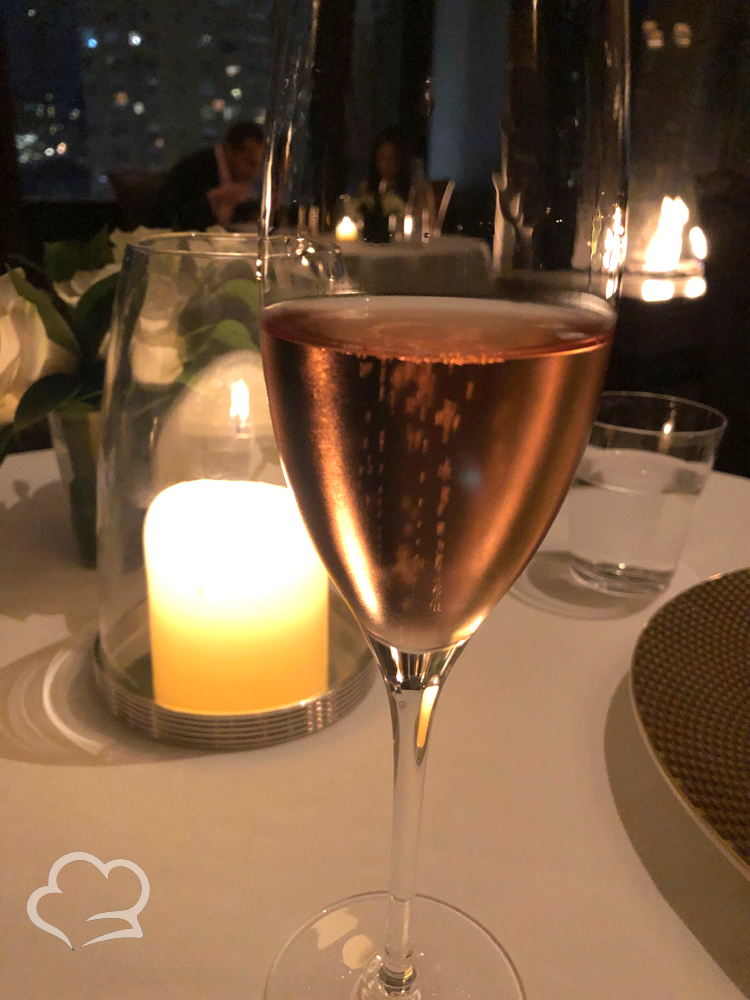
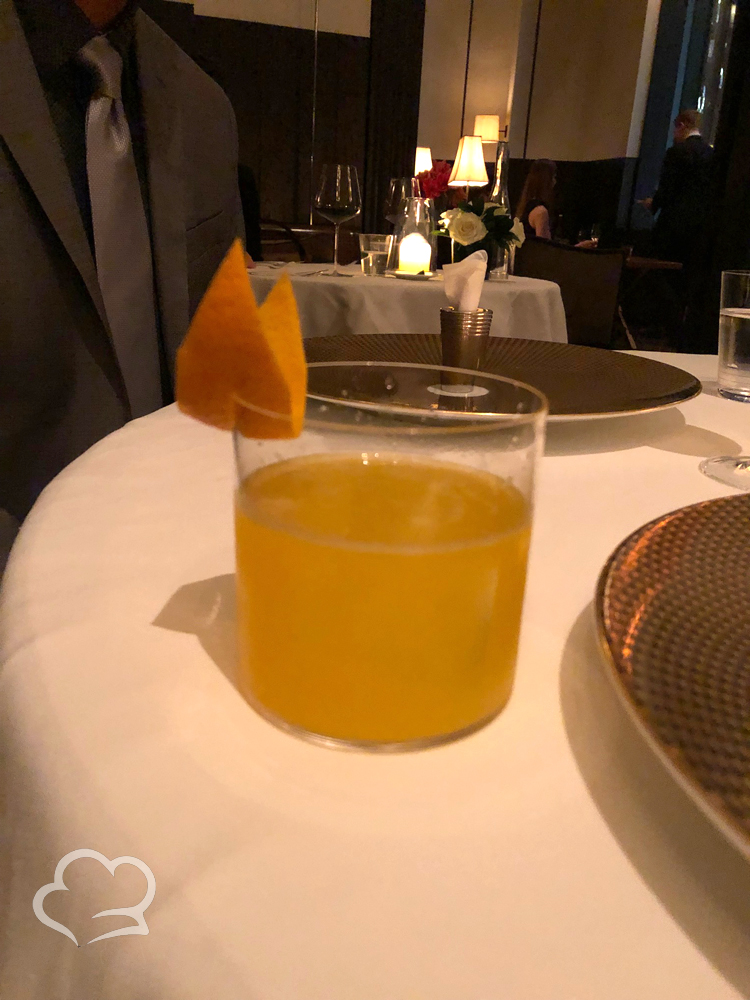
Our first set of dishes had a caviar focus. We started with “Oysters and Pearls” – a sabayon of pearl tapioca topped with Island Creek oysters. A sabayon is an Italian custard sauce, often replacing a cream sauce to bring richness and balance to a dish, without the heaviness. Because this sabayon had tapioca, and presumably even less egg than normal, it managed a deft light creaminess. In this sauce, the oysters were poached to perfection. A bite reminded you of the comfort of being wrapped in a warm blanket in your cozy bed. The star of the dish, however, was the Royal Regiis Ova Caviar, which is Chef Kellar’s own signature caviar that he recently launched in collaboration with partner and caviar guru, Shaoching Bishop. Realizing he could source caviar in a high quality, environmentally sustainable and “affordable” manner, he now supplies a number of the top chefs in the US. This caviar was excellent: small silky-smooth pearls of salty delight that complimented the cream and oysters perfectly. The first bite was the exact moment that I knew this was, in fact, going to be a very special meal.
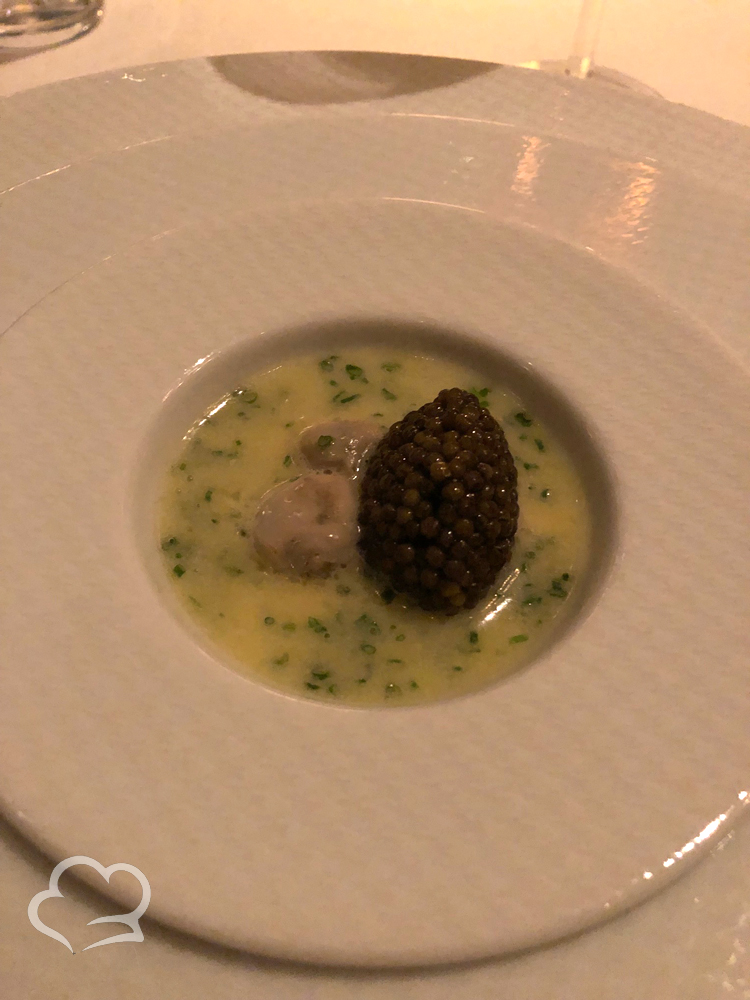
The second caviar focused dish was called “Royal Ossetra Caviar” and consisted of Norwegian langoustine in a old bay “glacage” with scallion salad. This caviar was also excellent, but once we had the Regiis Ova, this suddenly seemed less impressive – so if you are reading this Chef Keller: switch the order of these dishes next time. The langoustine is a confounding little critter, also called a Norway lobster or Dublin prawn, but is neither. It is similar to a crayfish and surprisingly for something so rarely heard of in the US, has the distinction of being Europe’s most economically valuable crustacean. They are prized for the sweet meat, which after eating this dish, I completely appreciate. The delicate sweetness paired with the salty caviar with the non-glacage glacage (it wasn’t sweet, or reflective so can we just call it a sauce?) providing the creamy matrix. The scallions added a nice hint of green freshness and bite to the dish.
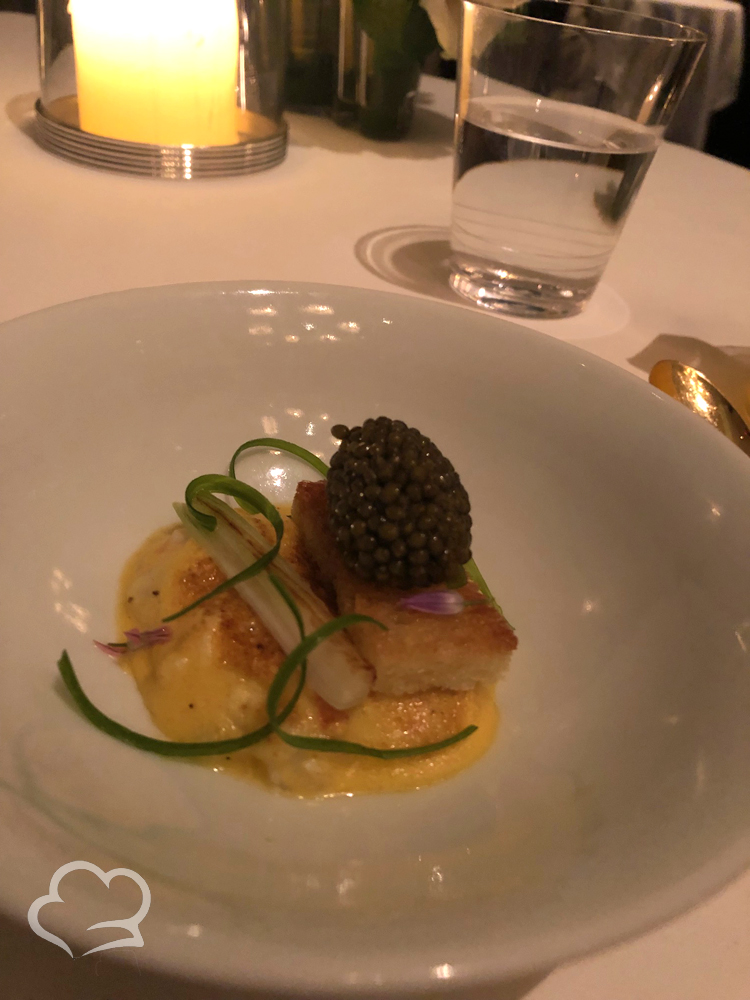
Next we “came back to California” with charcoal-grilled Sacramento Delta green asparagus with drops of meyer lemon and makrut lime “pudding”, shavings of marinated turnip and frisee lettuce. I’ve never had asparagus grilled to such perfection – I find it usually charred or crunchily undercooked. Dipped alternatively in the lemon and lime sauces, this dish helped reset the palate prior to the next heavy course.
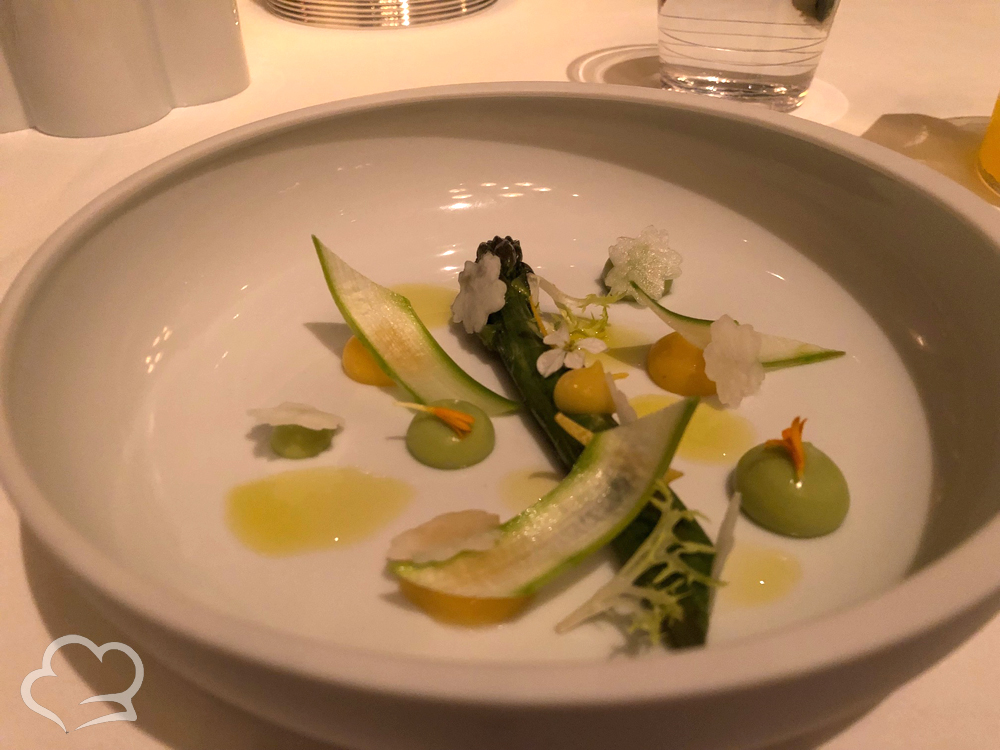
“Pastrami” of Hudson Valley moulard duck foie gras served with compressed Belgian endive, mulberries and Pearson Farm pecans. This rich and smooth foie gras was creamy and buttery with a very delicate flavor – I’m usually overwhelmed and can’t eat more than a few bites of foie, but in this case the entire serving was put away – yikes! The compressed endive had an almost oniony nature which I liked with the foie. The glazed mulberries were incredibly sweet (probably didn’t need the glaze, I’m thinking) so they were cut into even smaller bites – talk about rationing…
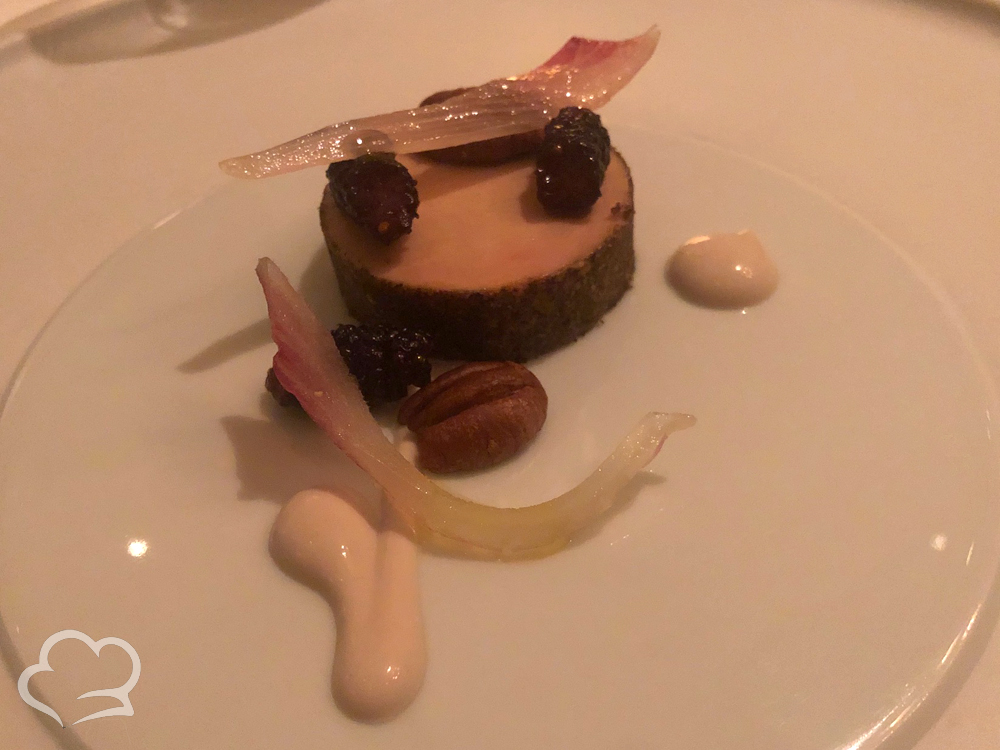
lyWe then enjoyed the house bread service, with many different options to choose from. Not wanting to fill up, we just picked a couple of rolls and enjoyed them with freshly made Diane St. Clair’s Animal Farm (loved that book!) butter and the assortment of salts – I have to admit, as of late I’ve been a bit obsessed with salts from different origins and their ability to transform food. This made for the perfect opportunity to exercise this obsession in a scientific manner and so I tried each salt – which was my favorite, you ask? Well loved ’em all equally, but some more equally than others.
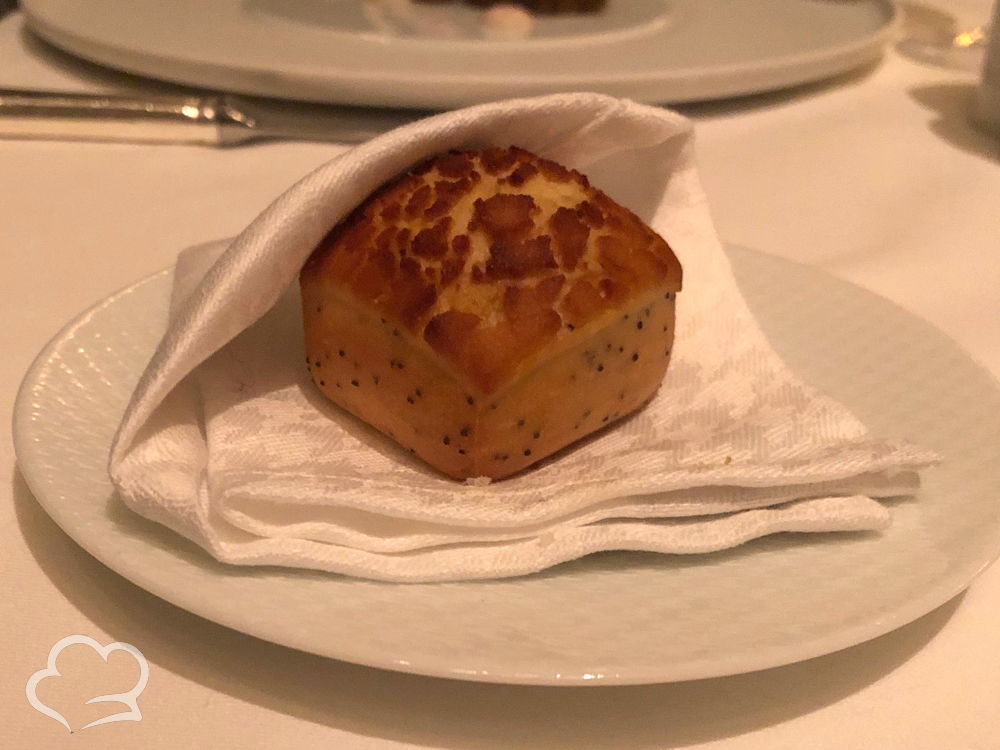
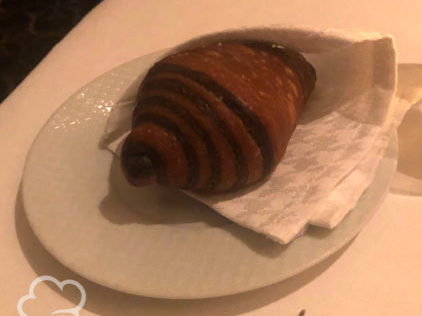
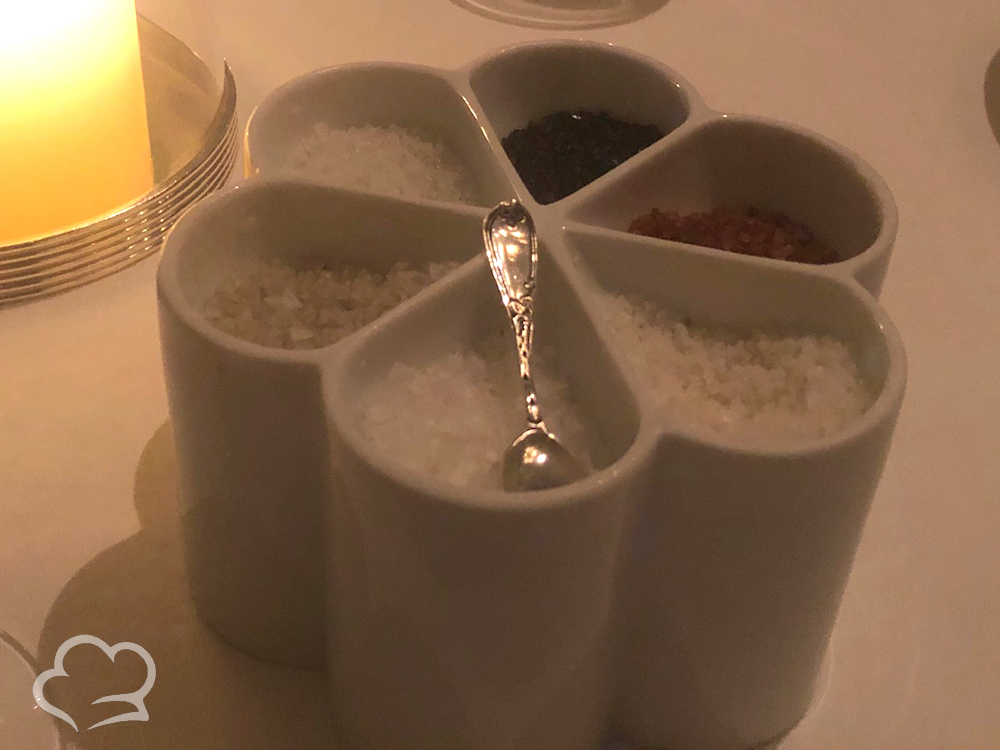
We then started in on the seafood dishes, starting with slow-cooked fillet of Scottish sea trout. How slow? Well over 6 hours according to our server which was astonishing given how mildly it was cooked – pseudo-sashimi in nature. But it was perfect for this particular dish and was served with pommel (potato) puree, Peekytoe crab aioli and pickled ramps. Ramps are delicately flavored wild leeks with a flavor that is a cross between mild onion and young garlic. In this dish they added a delightful aromatic component.

Next on the menu was herb-crusted Maine lobster served with morel mushrooms, caramelized green garlic and bathed in a “sauce Americaine” which has been termed the ultimate sauce for seafood because of its ability to enhance the subtle flavor of most seafood dishes without overpowering. Using the crushed shells of lobster, it also is the ultimate in using every part of the animal for your meal. The lobster was well cooked, but to me, surprisingly the star of the dish was the morel – deep woodsy flavor that had soaked up the lobster essence from the Americaine – I could have had a whole plate of these and skipped the lobster altogether – after all I’d already had langoustine.
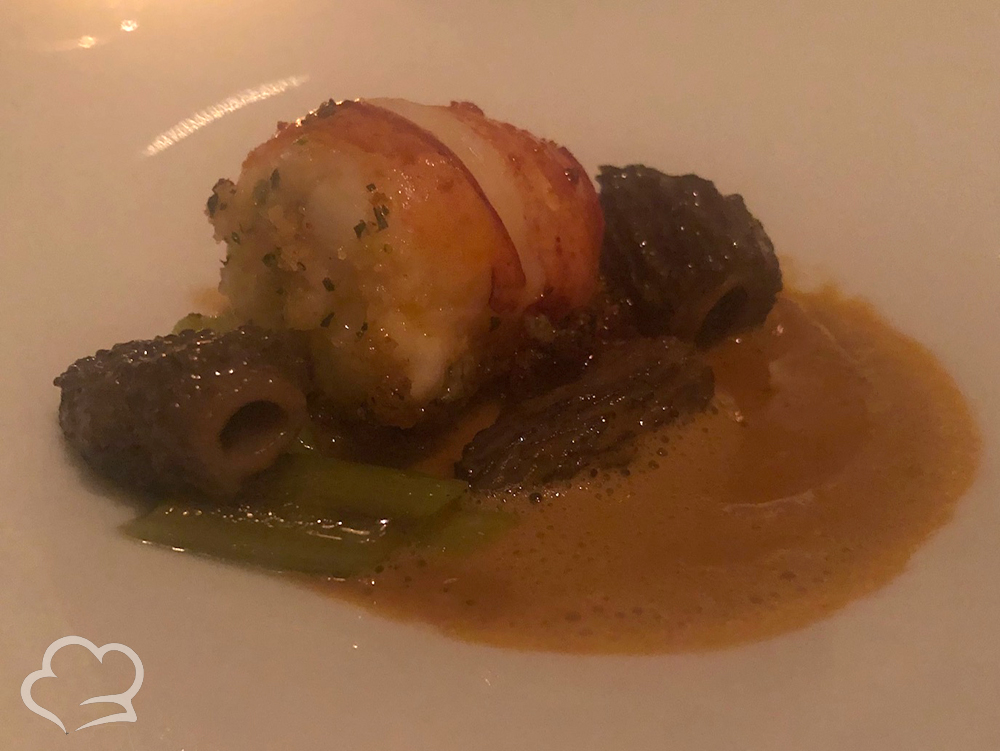
We then tried milk-fed yorkshire porcelet which was served with slices of Persian cucumber and mustard seed vinaigrette and a side consisting of a balled brioche “pain perdu” on a Blue Apron Ale bechamel. The cucumber provided necessary bites of freshness acting as a palate cleanser while eating the dish. The mustard seed vinaigrette was a bit too strong for me, and given the amazing quality of the meat, was something I was happy to ignore. The brioche and béchamel contributed the carbohydrate again to clear the mouth after the juicy, tender fatty meat. So, in all, they were perfect compliments to the star of the plate – the porcelet. What is Porcelet? Well, Porcelet is to pork as Kobe is to beef. While I don’t know if the rumors of Kobe cows being fed beer or massaged on a regular basis are true (or if that is all just urban legend), but I can tell you that porcelet pigs are apparently fed nothing but milk, and in other ways given the life of luxury (that is, untill slaughter). This results in what is claimed to be the most succulent pork imaginable, with a unique delicate flavor, a pale intramuscular fat that is creamy and firm and an astounding 30% moisture content (compared to 8% in regular pork). So if it is so good, why don’t we see it more often? The answer isn’t just cost – the meat is challenging to prepare as it is so moist that the water content often results in the meat internally steaming – and steamed pork isn’t something most people will pay $$$ for. And I must admit, this meat was probably the most amazing pig I’ve had – and that’s saying something as I’m a huge bacon fan!
With this course I also had a glass of 2016 Bethel Heights Aeolian Pinot Noir, a 94 point wine that is complex and loaded with fruit including blueberry, plum and cherry. Oak aging added nuanced notes of cinnamon and cedar. A nice wine, but not necessary one I’ll try to find again.
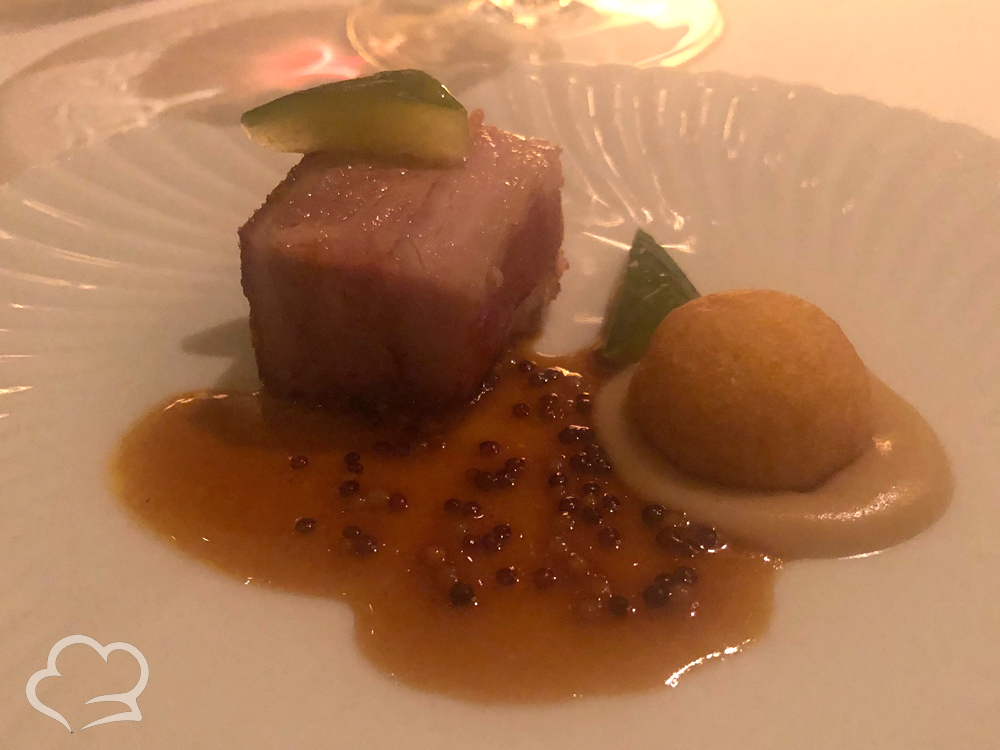
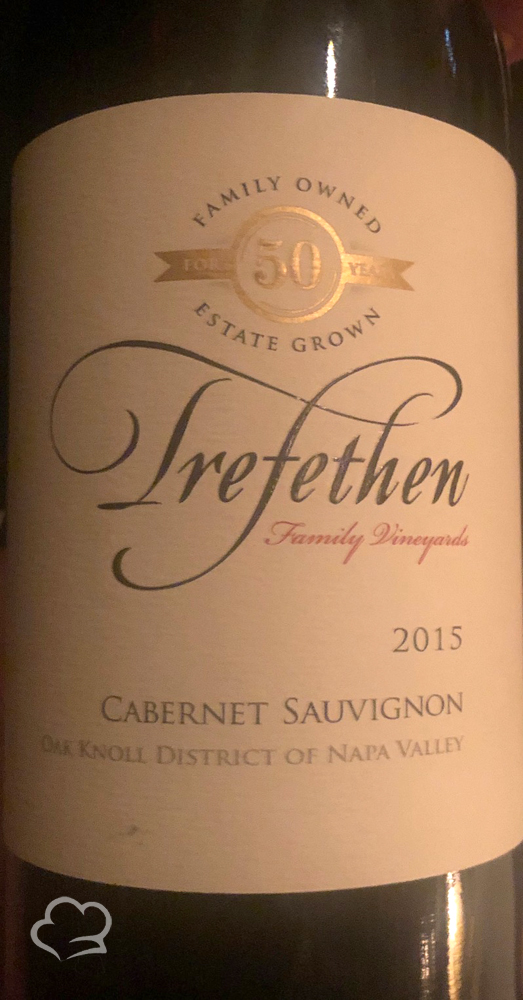
A video of how much these guys love milk.
ref: FarmLifeNC
From one meat course to another, we then upped the stakes a bit with the 48 hour-braised beef short rib. This was served with broccolini florettes, Shishito peppers and arugula oil and veal jus. I am convinced that this dish is why sous vide was created. Beef tenderness, to a large extent, is all about how the collagen is broken down. The hotter the temperature, the more the collagen contracts as it is cooked, and the more the enzymes that are supposed to break down the collagen also get damaged – this results in pushing the juices out of the meat and yields a tougher and drier steak. Ideally, you’d want to cook at a much lower temperature, allowing the collagen fibers to unfold and get broken down by natural enzymes in the beef, transforming the steak into a tender morsel that melts in your mouth. But at this low temperature it might take days – which is exactly what was done here. The “melt in your mouth” meat, coated with a delicious sweet and tangy glaze was another dish I’d like to take home with me. The broccolini and peppers were lightly salted and tossed with a splash of lemon which added a brightness to this otherwise fairly heavy dish. The veal jus provided a wonderful earth aura to the entire dish.
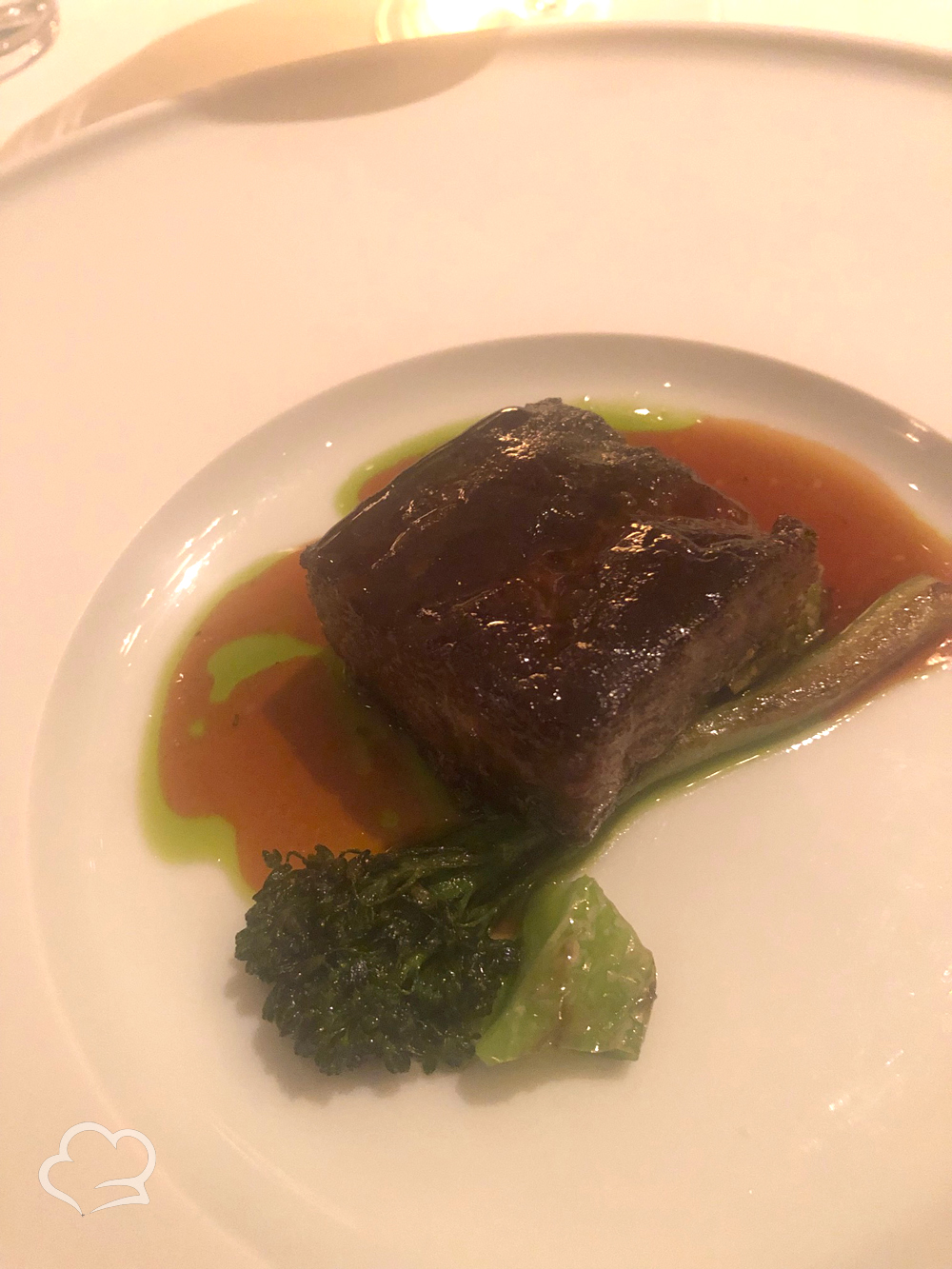
We then moved on to the cheese course with a gougere which is an airy French cheese puff, and is a distant cousins of one of my sweetie’s favorite desserts, profiteroles. These were resting in a aged gruyere and black winter truffle sauce. This dish was unexpectedly light given how flavorful and satisfying it was. A good thing as the symphony of desserts were just beginning. The kitchen staff was kind enough to send a lovely brie with some nuts and fruit for my sweetie who has a sensitivity to truffles.
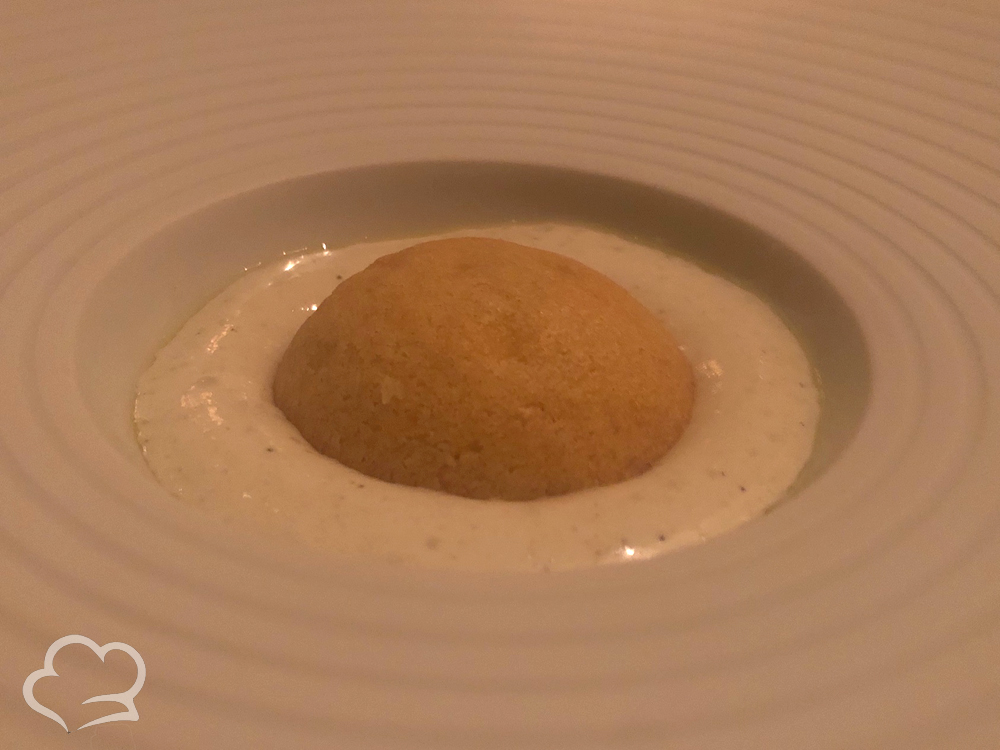
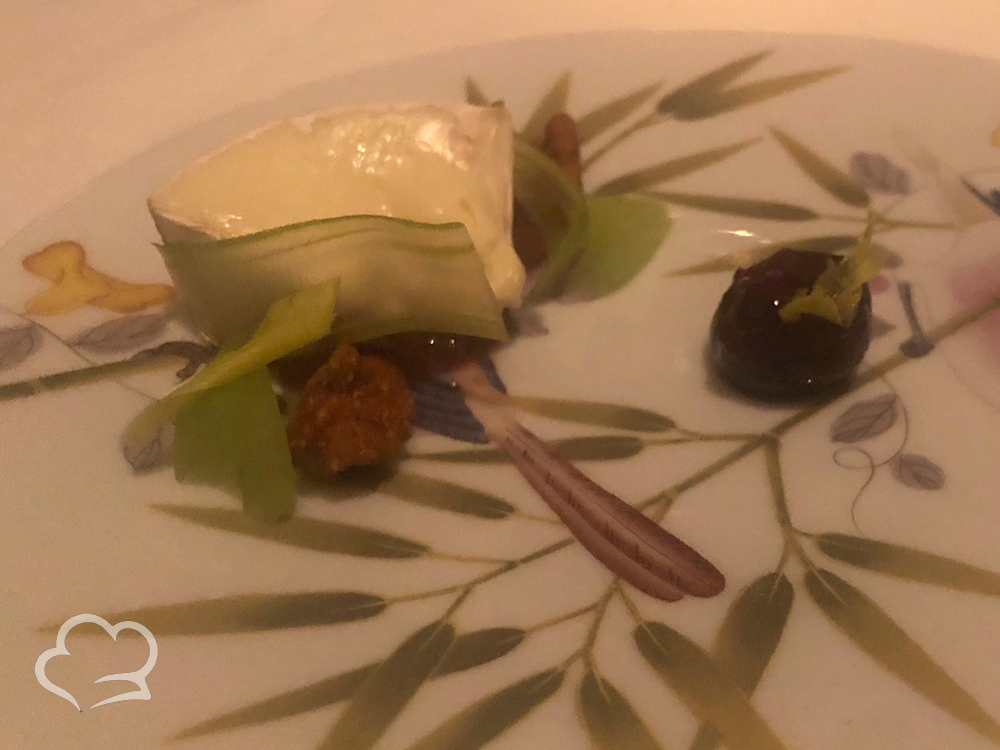
We started with some old fashioned donuts, covered in granulated sugar. We were warned that they were addictive and if we had one, we might not stop. They were not wrong, and after polishing off the entire basket, I certainly started eyeing the tables nearby.
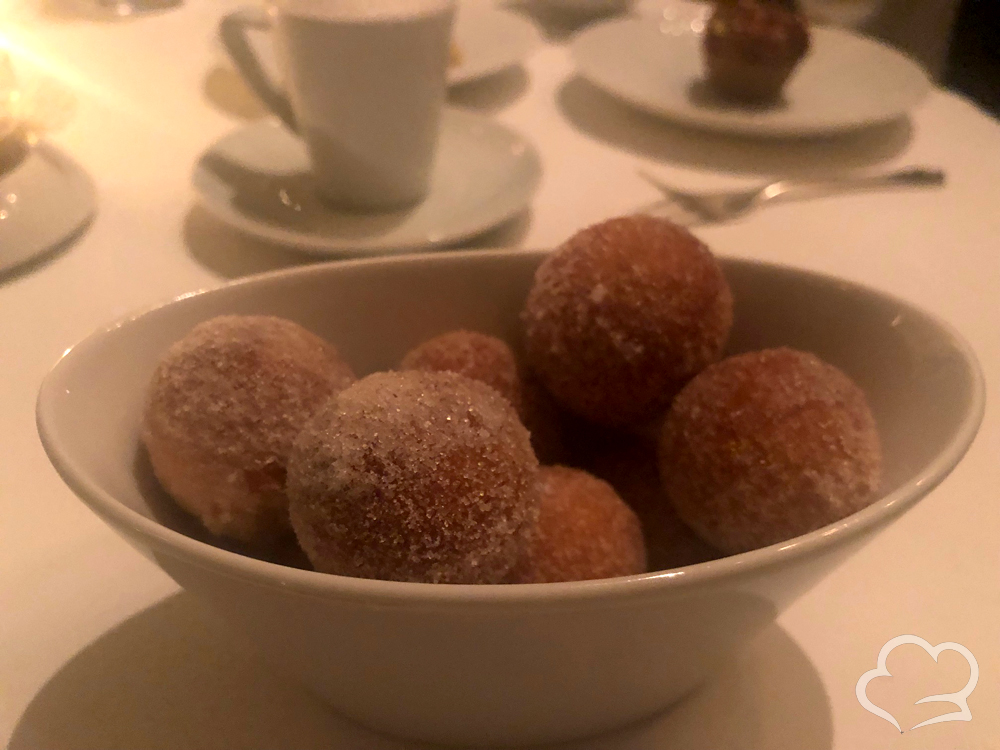
We were then assaulted by a trio of desserts:
A Victorian sandwich with hibiscus-poached rhubarb, Madagascar vanilla bean “creme diplomate” and those turkish delight.
A creamsicle with naval orange sherbet and milk tuile
A spiced pistachio financier with sunset apricot compote and buttermilk cremeux and K+M chocolate butter cream.
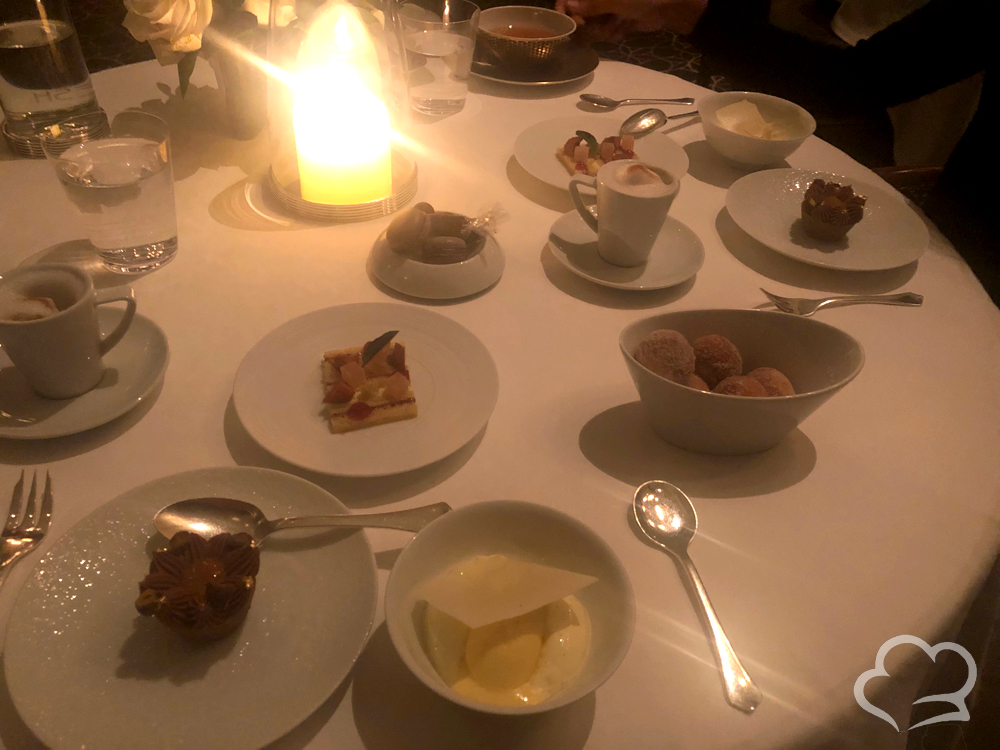
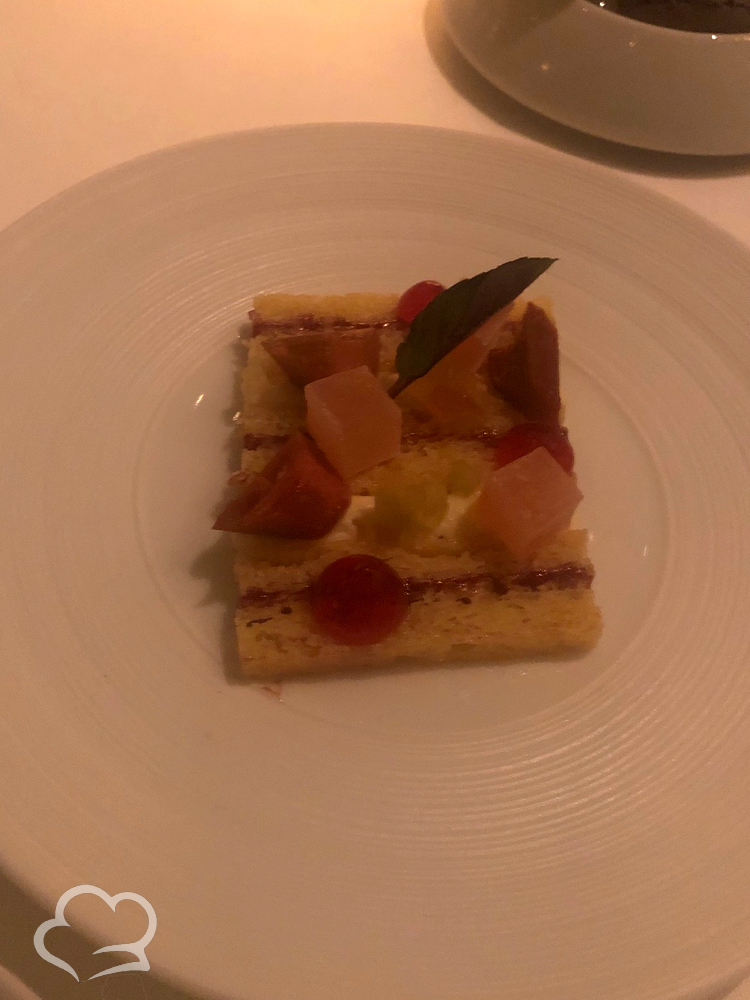
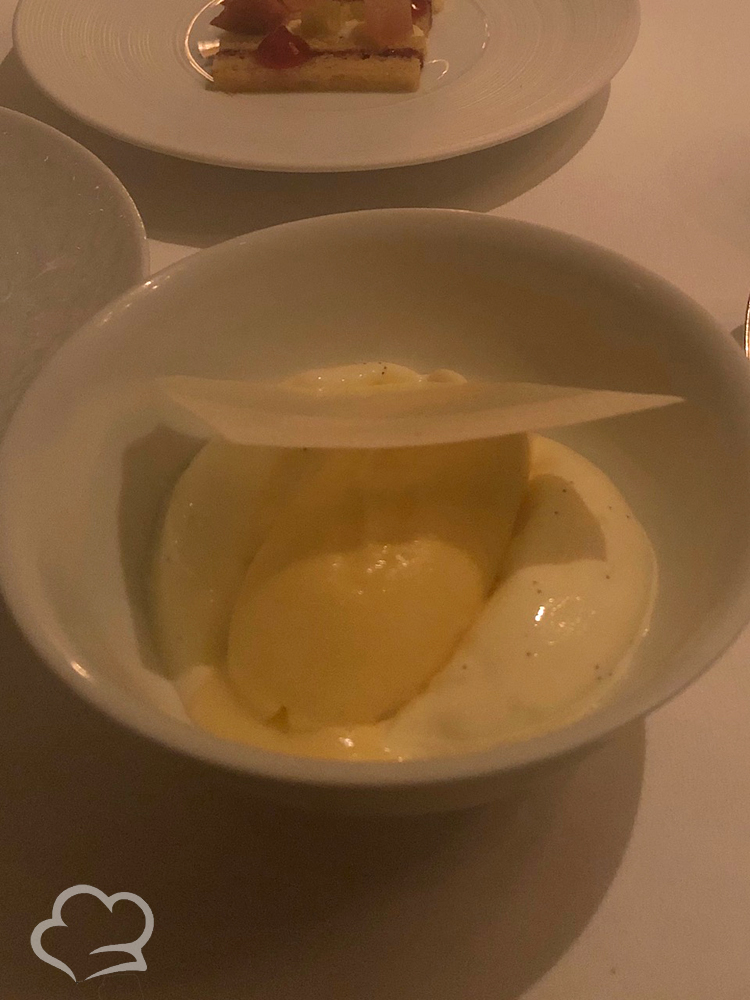
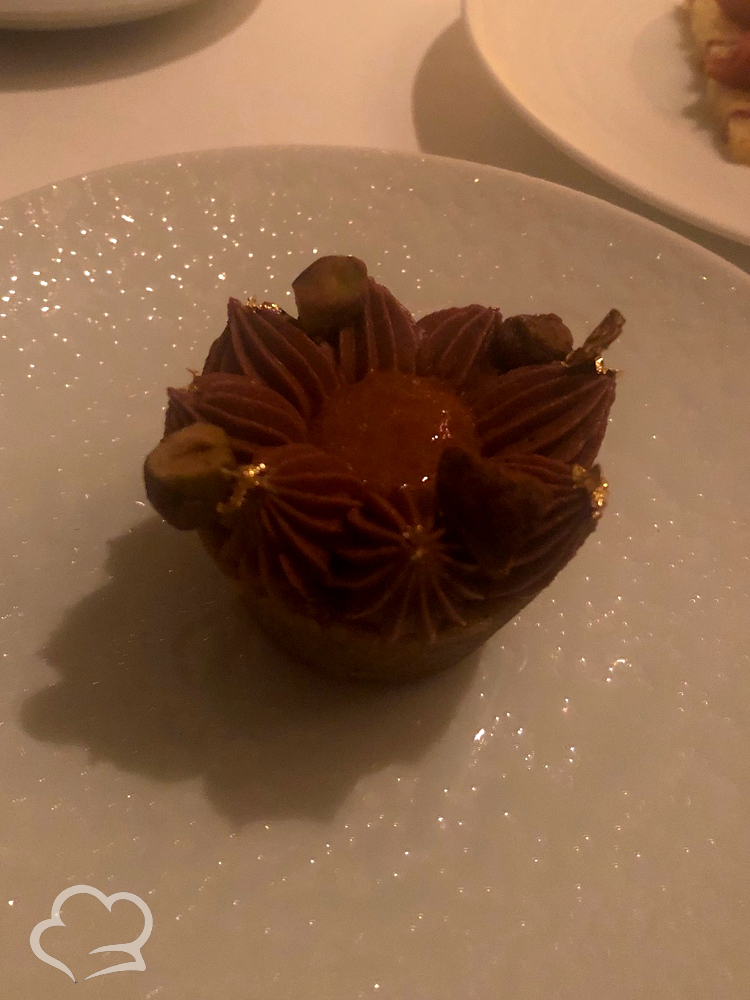
These three desserts should have been more than enough to satiate even the most demanding sweet tooth. However, the team at Per Se was not done yet. We were treated to an assortment of sweets including macarons, chocolate covered nuts and other mignardises. We were also treated to an assortment of chocolates with an amazing array of flavors. We each picked two, and because we were both willing to share, got to actually try 4 different ones… it is impossible to pick a favorite and so I’ll just say that you can pick what ever you want, and odds are great that you won’t go wrong.
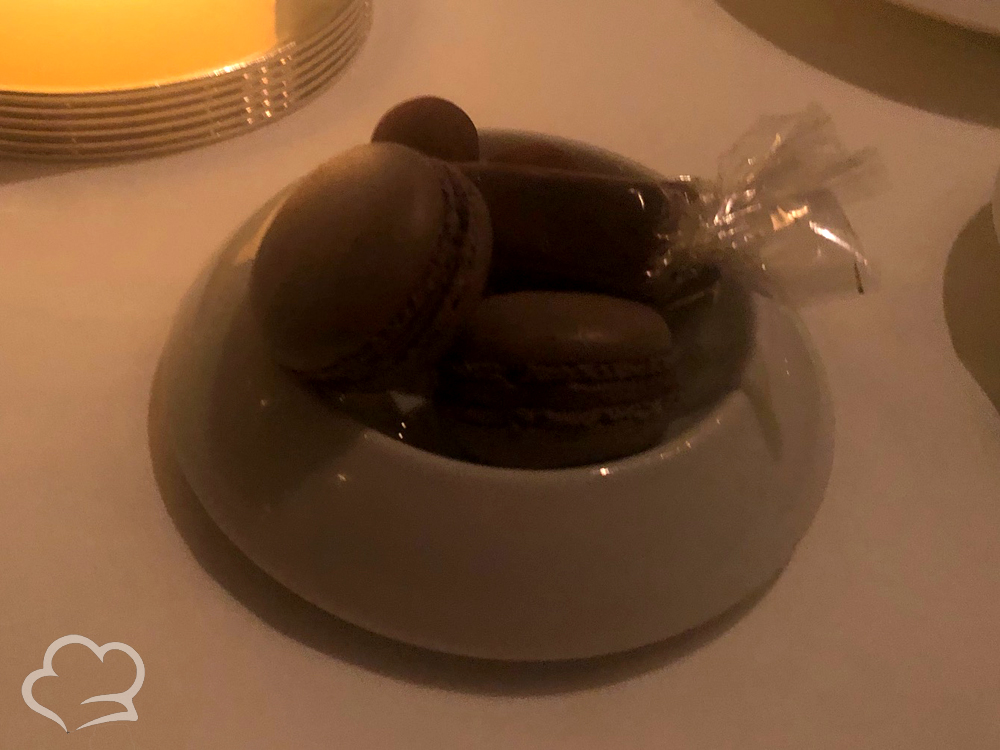
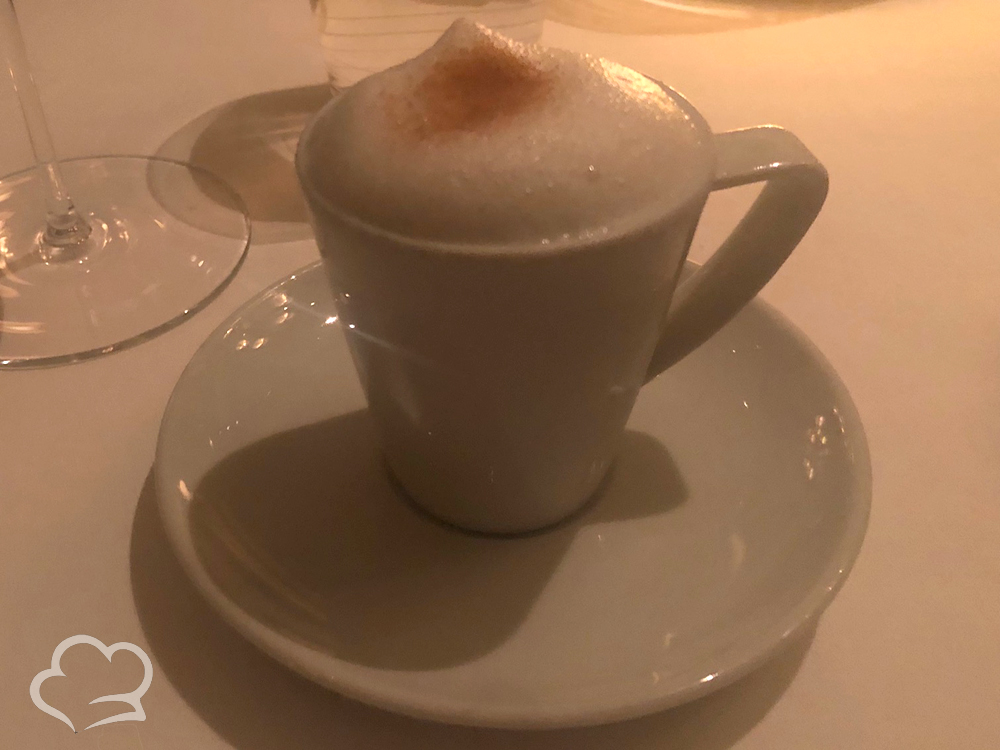
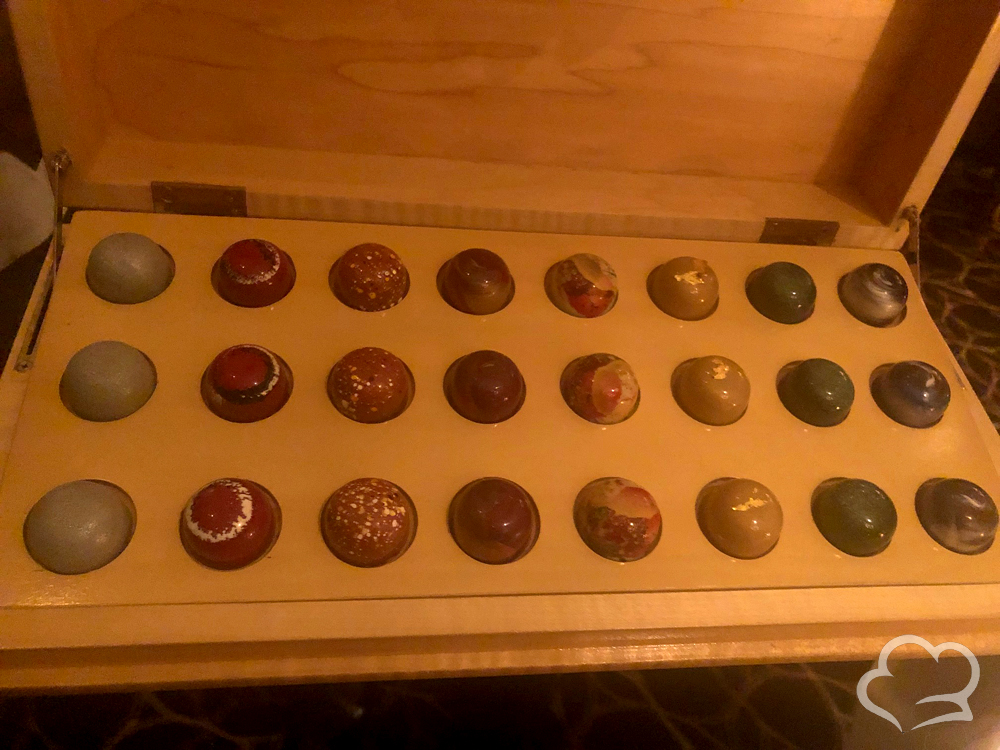
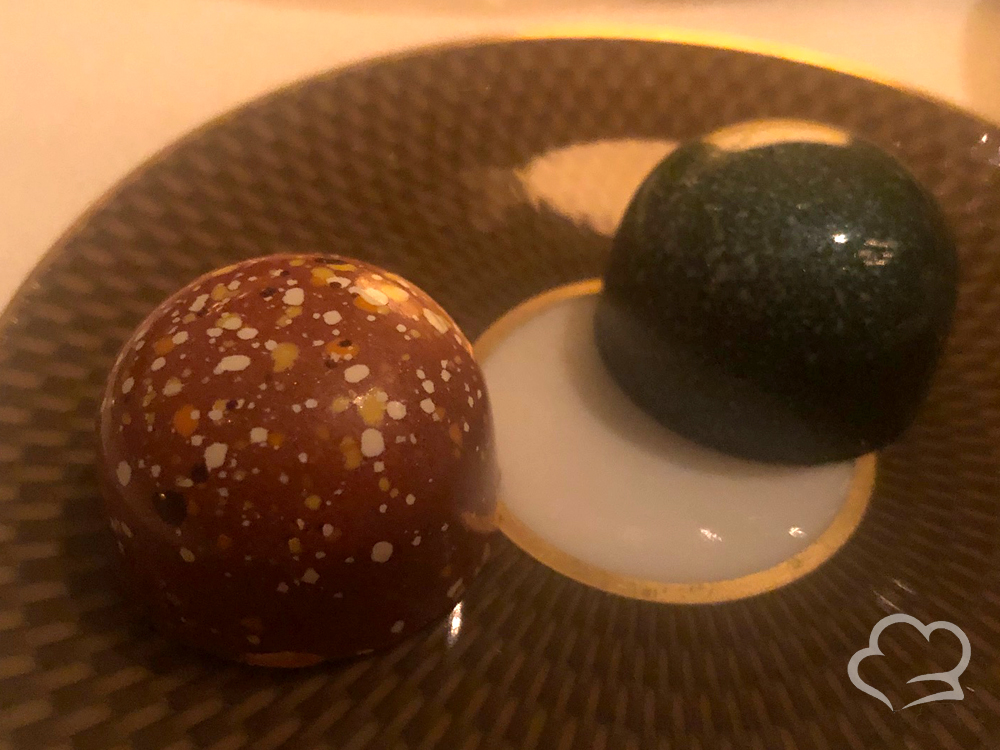
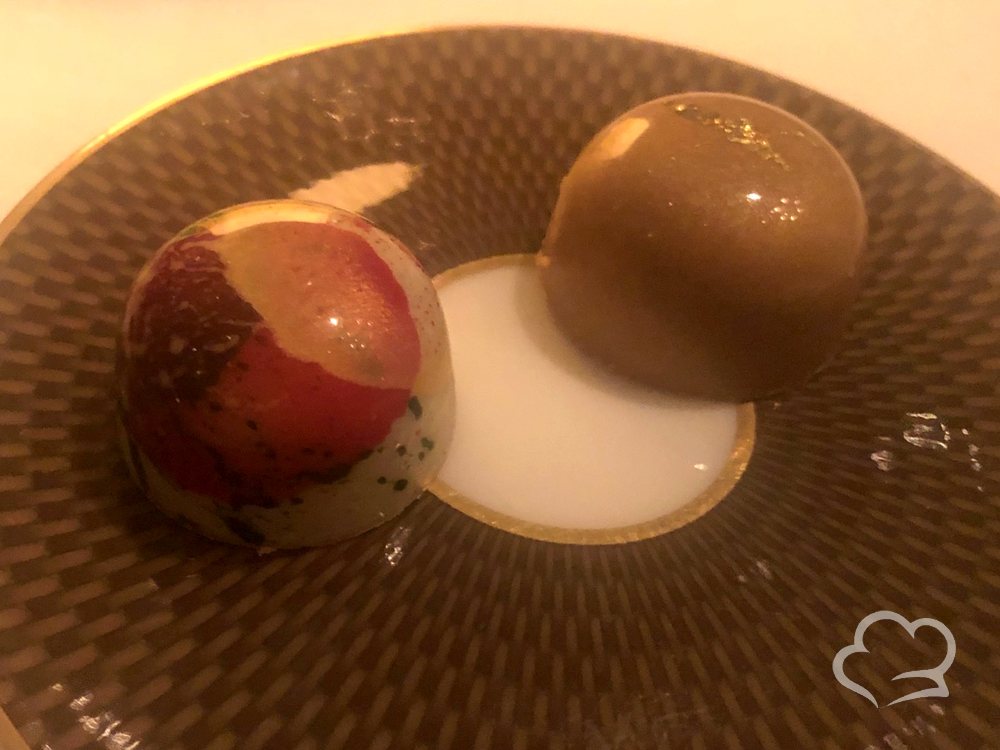
A visit to the kitchen and our signed menu!
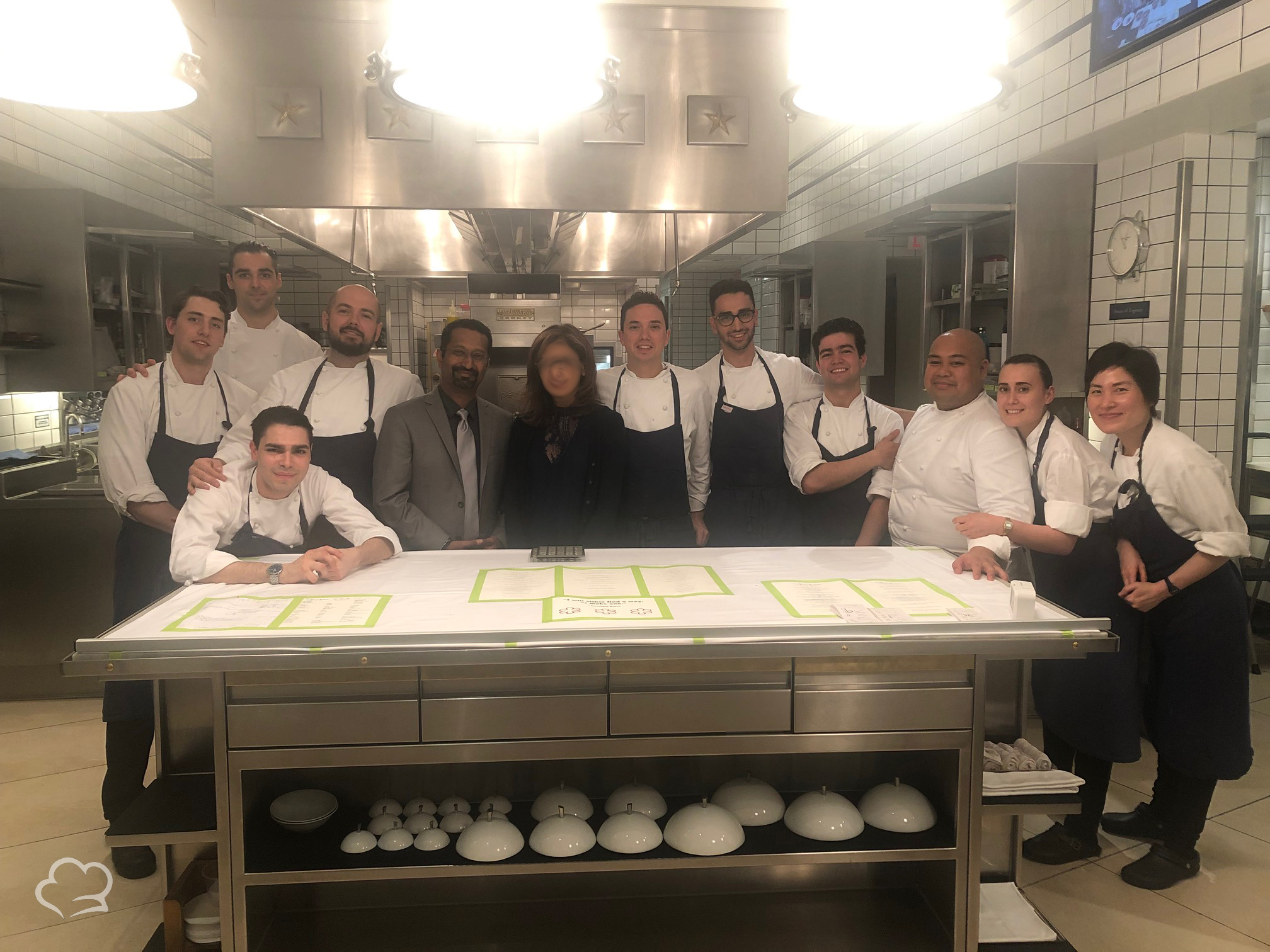
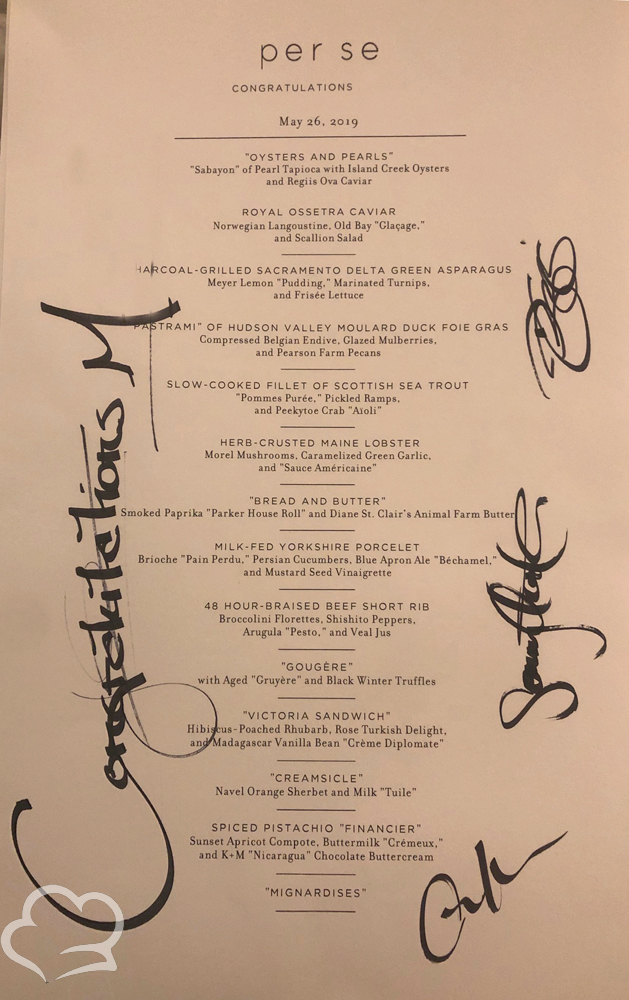
Final Thoughts
While the food was at the level I would expect for a 3 starred establishment, I will note that there were a few dishes that were only good (and this is where the curve kills ya). I realized that I was very glad we both ordered different dishes and shared – I might have been a little disappointed if we had the same menu and/or had not shared. This sentiment of “less than astonishingly great” could not also be said for the service – which was fantabulous in every way: The wait staff at Per Se clearly want their patrons to feel special – this feeling starts with check in and lasts till you are escorted out the restaurant at the end of the meal. They were friendly and approachable, striking up conversation to make us feel welcome. When the sommelier found out that we were from the Bay Area, he mentioned that he had curated a list of places to eat in the area, lesser known (hole-in-the-wall) restaurants with amazing food that we may not even know about. When we asked if he would be willing to share, he gladly took my email information. The his list (and a lovely note) was in my inbox before the next morning – now that is dedication. Additionally, my visit to the kitchen was very memorable, with the entire staff taking a break from their hectic schedule to pose for pictures and exchange pleasantries. They even showed us the live feed from the kitchen at The French Laundry – so I could glimpse at how the magic happens there as well. The team all signed a menu for me to take home – a wonderful momento of an evening I will cherish for years to come. I find that I’m no longer craving a visit to the French Laundry- having experienced its sister restaurant, Per Se and enjoyed myself so thoroughly. Thanks guys!!!
